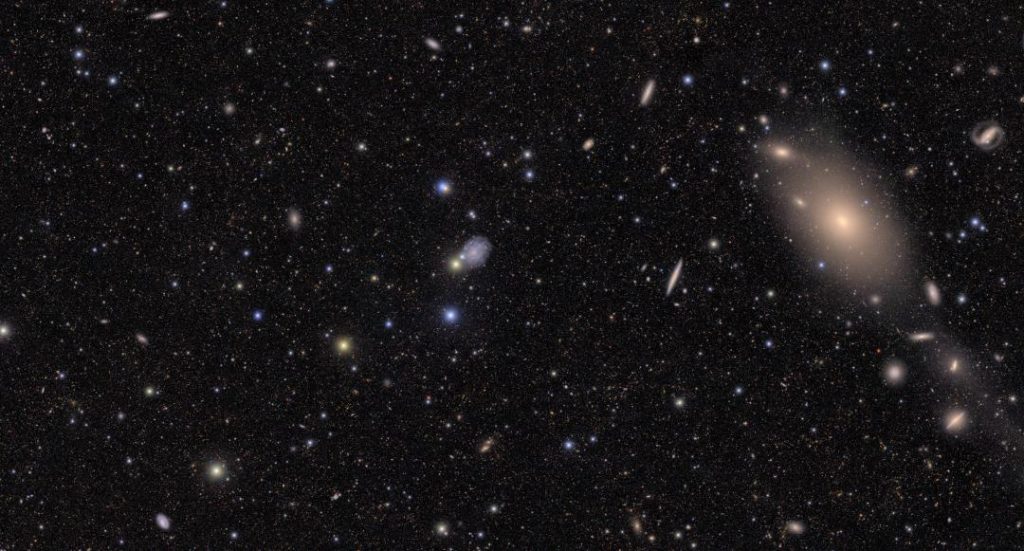
More than 1 Crore Galaxies Captured in One Image
The Vera C Rubin Observatory in Chile has achieved a groundbreaking feat in the field of astronomy. The observatory has released an image that captures more than 1 crore galaxies, a monumental milestone in the study of space and time. This remarkable achievement is a testament to the capabilities of the observatory’s state-of-the-art camera and the dedication of the scientists involved in the project.
The image, which measures 97,943 by 51,536 pixels, totalling 5.05 gigapixels, is a stunning visual representation of the vastness of the universe. The 1 crore galaxies captured in this image represent just 0.05% of the estimated 2,000 crore galaxies that the observatory aims to document during its 10-year Legacy Survey of Space and Time mission.
The Vera C Rubin Observatory, named after the pioneering astrophysicist Vera Rubin, is an astronomical observatory located in Chile’s Atacama Desert. The observatory is designed to study the universe in unprecedented detail, using a combination of cutting-edge technology and innovative survey methods.
At the heart of the observatory is the Large Synoptic Survey Telescope (LSST) Camera, the largest camera ever made. The camera is equipped with 189 individual lenses and 62 charge-coupled devices (CCDs), which work together to capture images of the sky. The camera is capable of capturing images of the entire visible sky in a single night, a feat that would have been unimaginable just a few decades ago.
The LSST Camera is designed to capture images of the sky in multiple wavelengths, including visible light, near-infrared light, and ultraviolet light. This allows scientists to study the universe in greater detail, by analyzing the different wavelengths of light emitted by celestial objects.
The Legacy Survey of Space and Time mission is a 10-year project that aims to map the entire sky in unprecedented detail. The mission will use the LSST Camera to capture images of the sky every few nights, creating a vast database of astronomical data. This data will be used to study the properties of dark matter and dark energy, which are thought to make up a large portion of the universe.
The release of the 1 crore galaxy image is a significant milestone in the Legacy Survey of Space and Time mission. The image is a testament to the capabilities of the LSST Camera and the dedication of the scientists involved in the project.
“This is a major milestone for the Vera C Rubin Observatory and the LSST Camera,” said Dr. Steven Kahn, the director of the observatory. “The camera is performing even better than we expected, and we’re excited to see the scientific discoveries that will come from this data.”
The image is not just a pretty picture; it’s a valuable tool for scientists who are studying the properties of galaxies. By analyzing the light emitted by galaxies, scientists can learn about their composition, size, shape, and distance from Earth. The image will also help scientists to study the distribution of galaxies in the universe, and to understand how they have evolved over billions of years.
The 1 crore galaxy image is just the beginning of the Legacy Survey of Space and Time mission. Over the next 10 years, the Vera C Rubin Observatory will continue to capture images of the sky, creating a vast database of astronomical data. This data will be used to study the universe in greater detail, and to make new discoveries about the nature of space and time.
In conclusion, the release of the 1 crore galaxy image is a significant milestone in the field of astronomy. The image is a testament to the capabilities of the LSST Camera and the dedication of the scientists involved in the project. The Legacy Survey of Space and Time mission is a groundbreaking project that will help us to better understand the universe, and the 1 crore galaxy image is just the beginning of this exciting journey.






